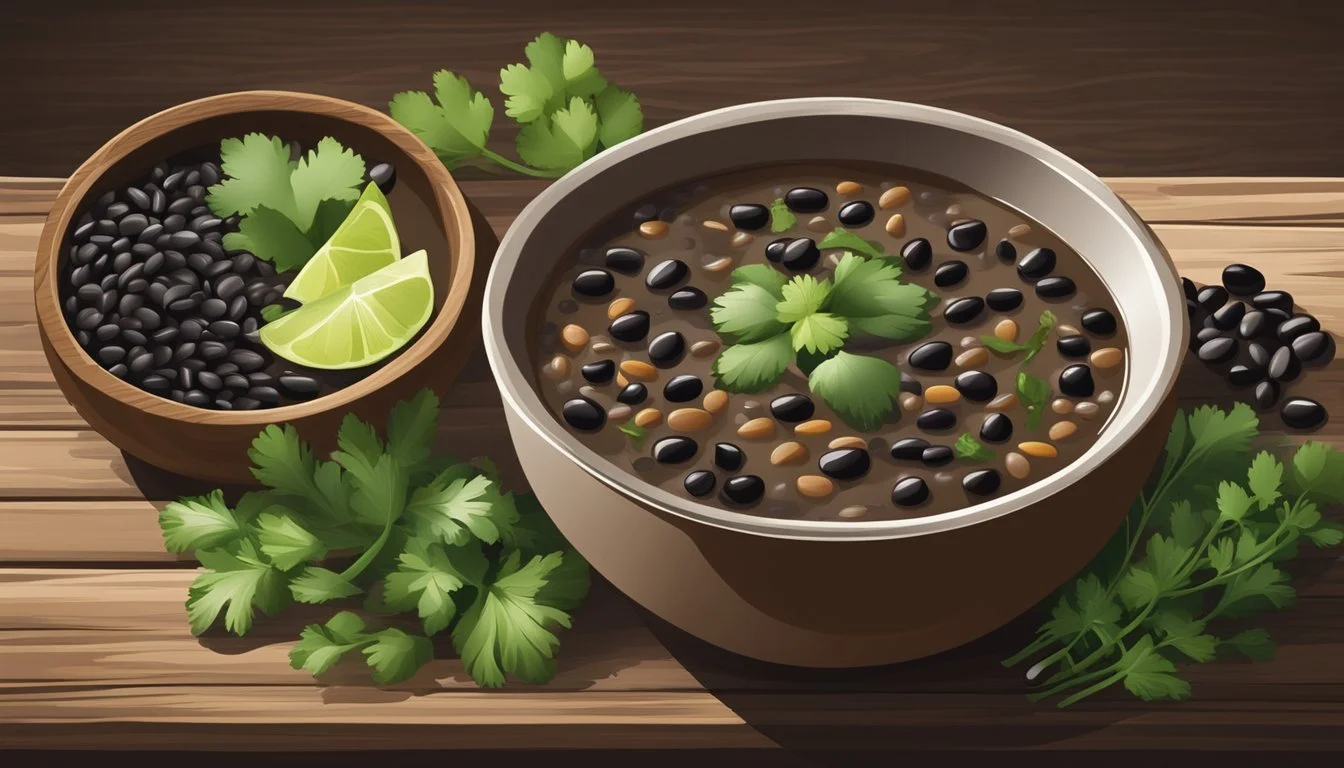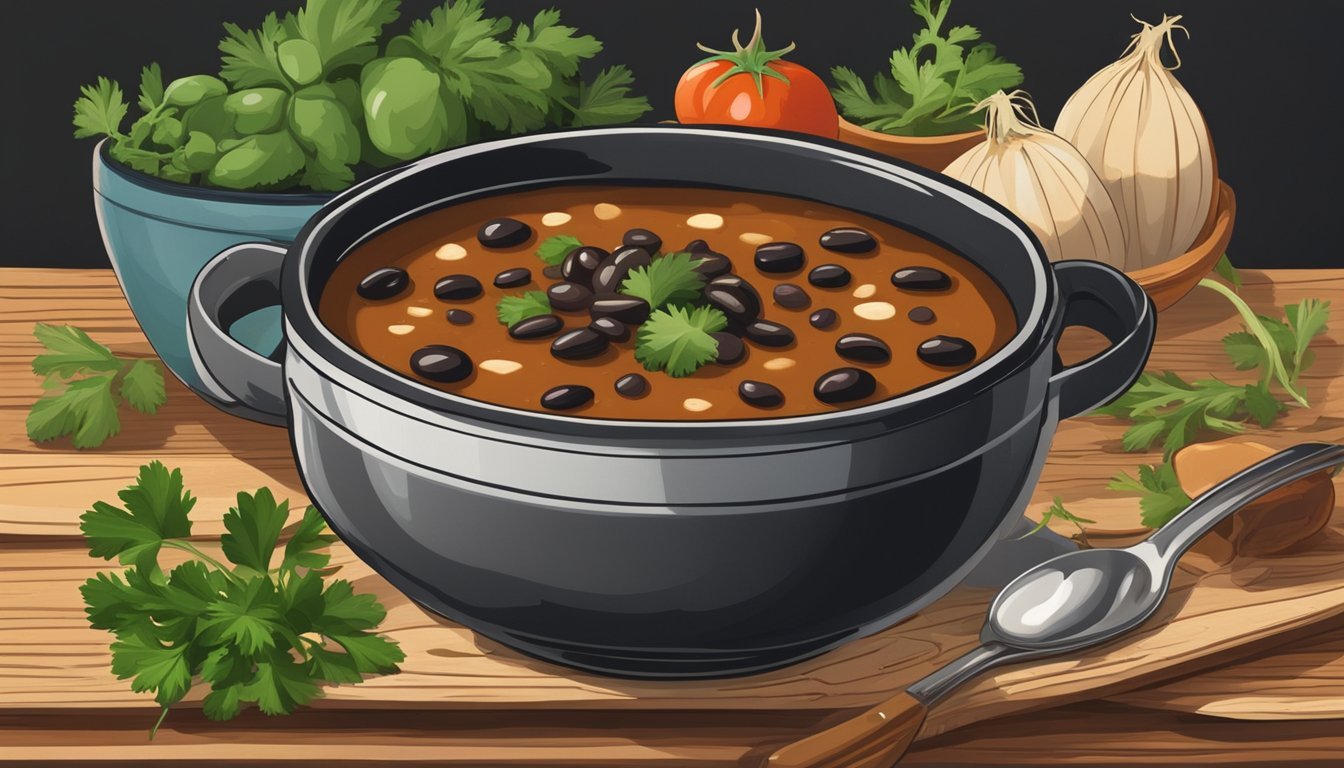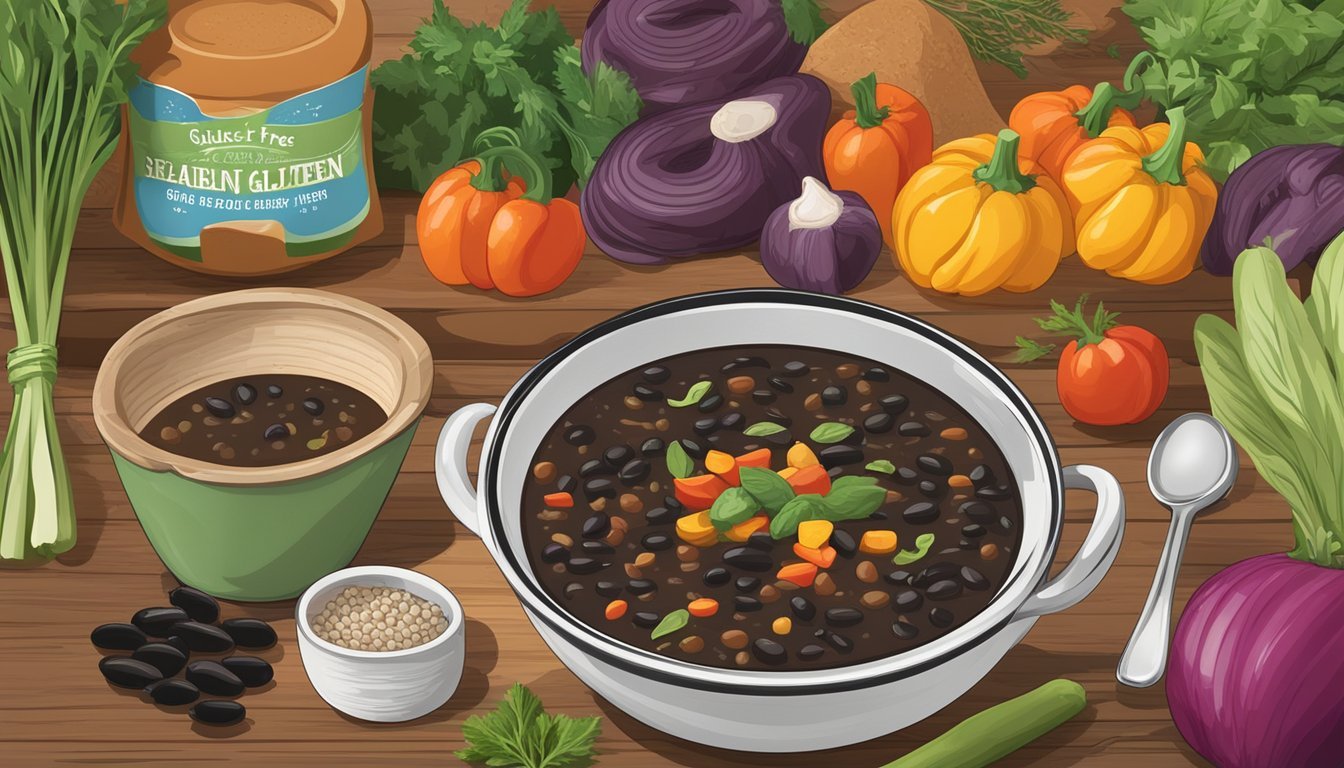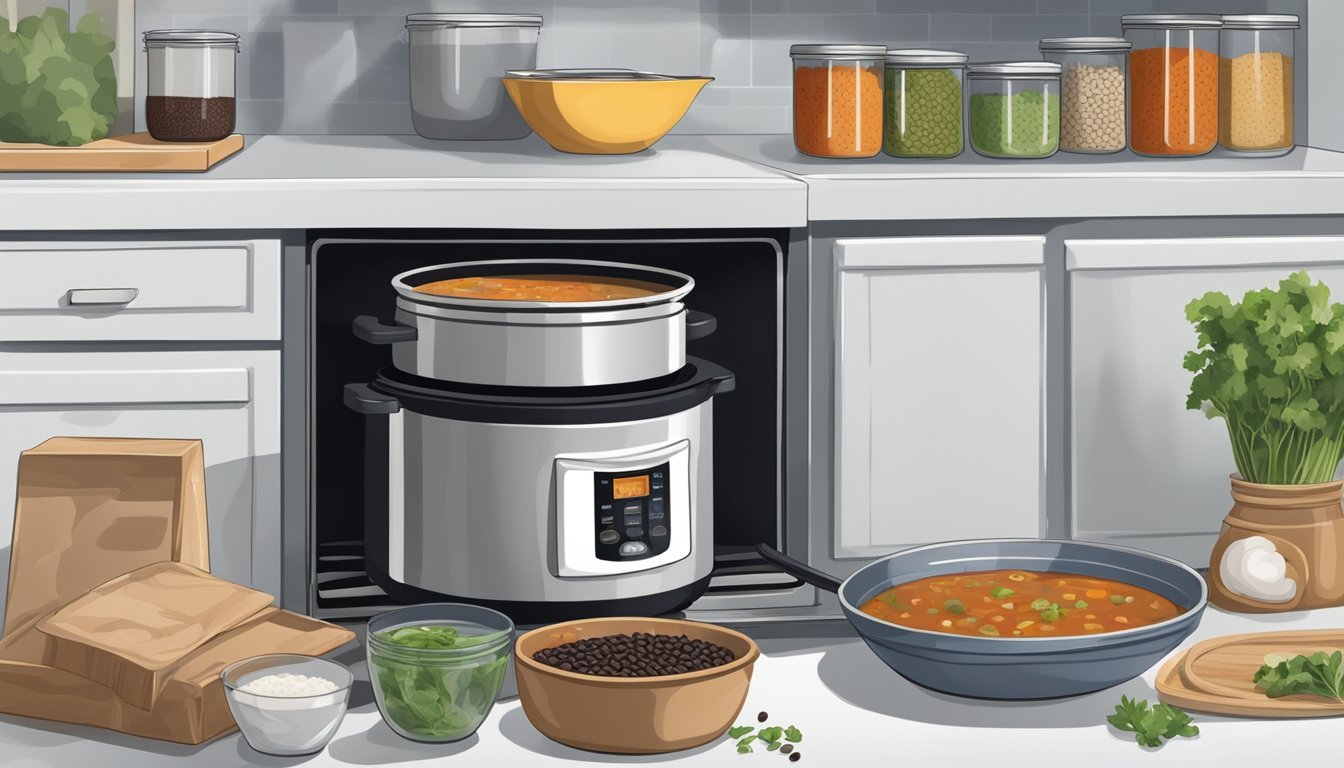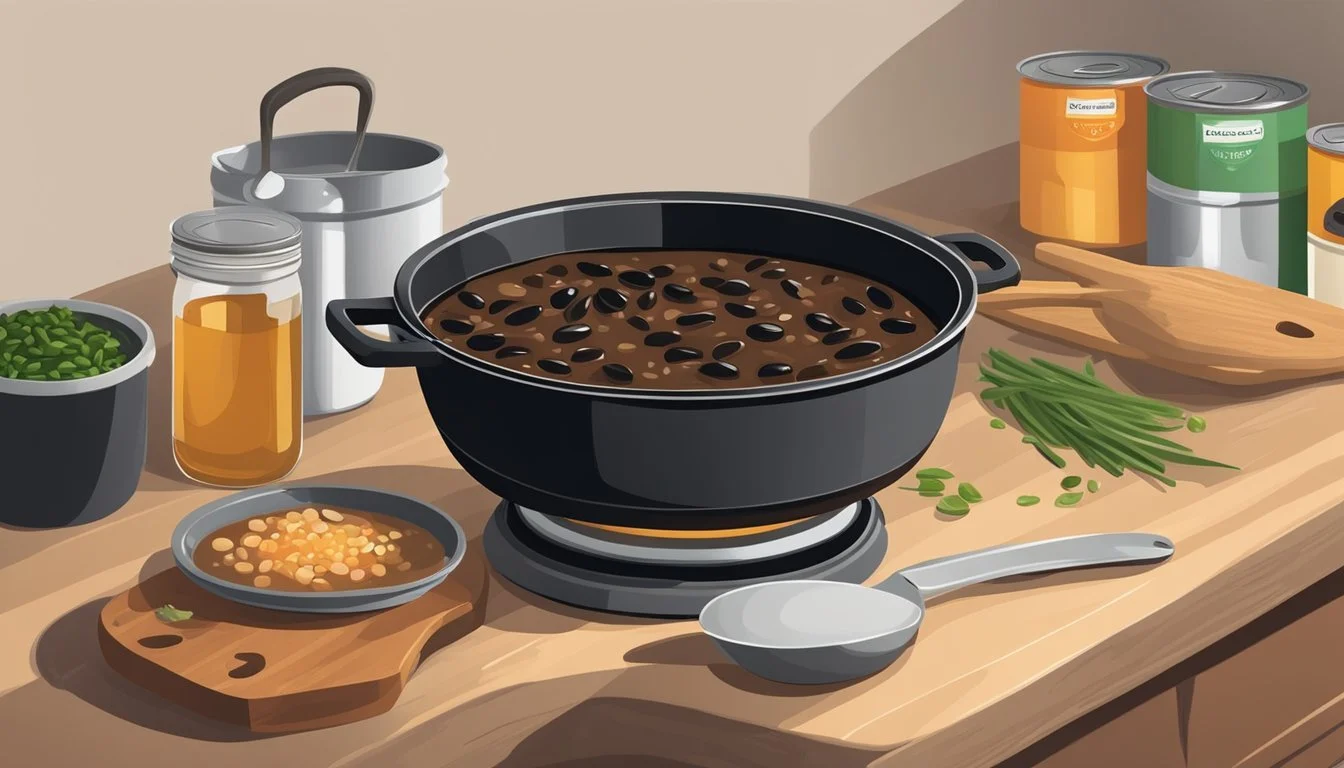Is Black Bean Soup Gluten-Free?
Understanding Its Dietary Profile
Black bean soup is a hearty and nutritious dish that has garnered attention for its potential to fit within a gluten-free diet. Gluten, a protein found in wheat, barley, and rye, must be avoided by individuals with celiac disease or gluten sensitivity. Fortunately, the core ingredients of traditional black bean soup—black beans, vegetables, and spices—are naturally free of gluten. However, consumers should remain vigilant as certain prepared black bean soups (What wine goes well with soups?) or recipes may include gluten-containing additives or be subject to cross-contamination during manufacturing.
When making black bean soup at home or purchasing pre-made versions, it is essential to review ingredient lists and manufacturing practices. For example, some brands, like Goya, explicitly state their black bean soup is produced on a dedicated gluten-free line, reassuring consumers of its safety. Conversely, homemade recipes can vary widely; cooks should ensure that all ingredients, such as broth or seasonings, are labeled gluten-free and avoid using utensils or cookware that may have come into contact with gluten.
In terms of preparation, the versatility of black bean soup allows for an array of gluten-free options. Vegetables like onion, carrots, celery, and peppers can provide a flavorful base, while spices such as cumin and oregano add depth to the dish. Gluten-free consumers can enjoy the warm, comforting bowl of black bean soup, provided they take the necessary precautions to ensure its purity from gluten.
Understanding Gluten-Free Diets
In exploring the compatibility of black bean soup with a gluten-free diet, it is crucial to understand what constitutes a gluten-free diet and the health benefits it may offer.
What Does Gluten-Free Mean?
Gluten-free refers to a diet that does not include gluten, a protein found in wheat, barley, rye, and their derivatives. Food products labeled as gluten-free must comply with specific regulations that limit the presence of gluten to less than 20 parts per million. Individuals who have celiac disease, gluten sensitivity, or wheat allergies opt for this diet to avoid the adverse reactions caused by gluten.
Benefits of a Gluten-Free Lifestyle
Adopting a gluten-free lifestyle may provide several health benefits, especially for those diagnosed with gluten-related disorders:
Reduction in symptoms: For individuals with celiac disease or gluten sensitivity, following a gluten-free diet can lead to significant decreases in symptoms such as bloating, diarrhea, and abdominal pain.
Improved nutrient absorption: Gluten-free diets can help restore proper nutrient absorption in the small intestine, which is often impaired in those with celiac disease.
Promotion of healthy weight: Some people might find a well-planned gluten-free diet helps in achieving a healthy weight, although it is not inherently a weight loss diet.
Awareness of food choices: Staying gluten-free requires careful reading of food labels, which can increase awareness and potentially lead to healthier food selections.
Ingredients Analysis
When scrutinizing the ingredients of black bean soup, it is vital to assess both their gluten content and their roles in the overall flavor profile.
Common Ingredients in Black Bean Soup
Beans: Black beans are naturally gluten-free and serve as the primary foundation of the soup. They can be used either dry and soaked or as canned black beans, which are more convenient but should be rinsed to reduce sodium.
Vegetables: Aromatic vegetables such as onion, carrot, celery, and garlic are often sautéed in olive oil to create a flavor base. These vegetables are also inherently gluten-free.
Liquids: The soup's consistency is typically rendered by vegetable broth or water. Homemade broth is ideal for ensuring it's gluten-free, as some store-bought broths may contain gluten.
Spices: Commonly used spices include cumin and ground cumin, along with salt and pepper to enhance the taste. These spices are naturally gluten-free, but it's crucial to check for any cross-contamination if they are not labeled gluten-free.
Identifying Gluten in Soup Ingredients
When it comes to identifying sources of gluten in soup ingredients, diligence is key. Gluten-containing ingredients can sometimes be found in:
Broths and Stocks: Always verify if the broth used is labeled gluten-free, as some may have additives or have been thickened with wheat-based flour.
Spices: While inherently gluten-free, spices like cumin or spice blends can be cross-contaminated during processing. Look for those that are certified gluten-free.
Canned Beans: Some canned black beans could be cross-contaminated or contain gluten-containing additives. Reading labels here is crucial.
Remember that while the individual ingredients such as beans, veggies, and spices might be safe, the risk of gluten often lies in prepackaged or processed items, where cross-contamination or hidden gluten-containing ingredients can be an issue. It's always recommended to check the labels or contact the manufacturer if there is any doubt about a product's gluten-free status.
Preparing Black Bean Soup
Preparing black bean soup that is gluten-free requires specific cooking techniques and considerations to ensure that the recipe maintains its intended flavor and texture. Below are subsections detailing three vital elements of the preparation process.
Gluten-Free Cooking Techniques
To make black bean soup gluten-free, one must start by selecting all gluten-free ingredients. Gluten is typically not present in pure black bean soup ingredients, but it is imperative to check that the beans, broth, and spices are certified gluten-free to avoid cross-contamination. Start by draining and rinsing canned black beans to reduce any potential for digestion discomfort. Use a gluten-free vegetable or meat broth as the soup base, taking care not to introduce any gluten-containing additives.
Using a Blender for Smooth Texture
Achieving a smooth texture in black bean soup often involves the use of a blender. After simmering the beans with the broth and aromatics, remove a portion of the soup and purée it in a blender until mostly smooth. An immersion blender can also be employed directly in the pot for convenience. This technique helps create a creamy consistency while still leaving some beans whole for texture.
Simmering for Flavor Enhancement
Simmering is a crucial step in preparing black bean soup as it allows the flavors to meld and deepen. During this stage, ingredients such as onions, carrots, celery, and spices such as cumin, smoked paprika, and bay leaves release their essential oils, enhancing the overall taste of the soup. A gentle simmer over low heat, typically ranging from 15 to 20 minutes, is sufficient to achieve a robust flavor profile without overcooking the ingredients.
Nutritional Value and Health Benefits
Black bean soup offers a robust nutritional profile particularly notable for its high protein and fiber content. These nutrients are essential for maintaining overall health and providing specific benefits such as muscle repair and digestive health.
Protein and Fiber Content in Beans
Black beans are a significant source of protein, which is vital for body tissue repair and muscle building. A typical serving of black beans can provide a substantial portion of the Recommended Daily Value (DV) for protein, making it especially beneficial for individuals following a plant-based diet.
Moreover, these legumes are rich in dietary fiber, offering both soluble and insoluble types. Fiber is crucial for digestive health, helping to maintain regular bowel movements and prevent constipation. It also plays a role in blood sugar regulation and can assist in maintaining a healthy weight by promoting feelings of fullness.
Gluten-Free for Healthier Digestion
Gluten-free diets are essential for people with celiac disease or gluten sensitivity, as gluten can trigger harmful digestive reactions. Black bean soup is inherently gluten-free since its main ingredient, black beans, does not contain gluten. This makes it a safe and healthy choice for individuals looking to avoid gluten while still receiving ample nutrients from their meals. Additionally, consuming gluten-free meals like black bean soup can aid in reducing inflammation and discomfort for those with gluten intolerances, contributing to a healthier digestive system.
Customizing Your Black Bean Soup
Creating a delightful black bean soup that caters to specific dietary needs and preferences is straightforward with the right adjustments. Whether it’s to align with a vegan or vegetarian lifestyle, enhance flavors, or modify textures, customizing your black bean soup is simple.
Alternative Ingredients and Substitutes
For those looking to keep their soup gluten-free, it's essential to confirm that all ingredients, such as broth or stock, are certified gluten-free. Stock often contains gluten unless stated otherwise.
Broth: Use vegetable broth for a vegetarian option or confirm that your chicken or beef broth is gluten-free if not strictly vegetarian.
Thickeners: For a thicker texture, puree a portion of the soup rather than using flour-based thickeners.
Adding Heat and Spice
Incorporating spices not only adds heat but also layers of flavor.
Mild Heat: Add a teaspoon of paprika for a subtle warmth.
Medium Heat: Include chili powder; start with one tablespoon and adjust to taste.
Spicy: Mix in red pepper flakes, beginning with a quarter of a teaspoon, and increase as desired for a hotter profile.
Vegan and Vegetarian Variations
To maintain the integrity of a vegan black bean soup:
Ensure all added ingredients such as broth are free of animal products.
Vegetables: Sauté onions, carrots, celery, and bell peppers in olive oil rather than butter.
Toppings: Opt for dairy-free sour cream or cheese substitutes if desired.
Serving and Garnishing
When serving black bean soup, the selection of toppings and garnishes can transform a simple dish into an extraordinary meal. Thoughtful pairing of accompaniments can cater to different dietary preferences and enhance the soup's flavor profile.
Soup Toppings and Accompaniments
Toppings add texture and flavor to black bean soup, making each spoonful a unique experience. Common selections include:
Cheddar cheese: Adds richness and creaminess.
Sour cream or vegan sour cream: Provides a cool, tangy contrast to the warmth of the soup.
Avocado: Offers a buttery texture and a boost of healthy fats.
Cilantro: Imparts a fresh, citrusy note.
Lime wedges: A squeeze of lime juice brightens the soup's deep flavors.
Pico de gallo: Introduces a fresh and zesty element.
For those with gluten sensitivities, ensure that all accompaniments are free of gluten-containing ingredients.
Choosing the Right Garnishes
A well-chosen garnish not only adds visual appeal but also complements the soup's taste:
Fresh lime juice: A drizzle can enhance the earthiness of the beans with its acidity.
Sliced avocado: Adds a creamy and visually appealing element atop the soup.
Cilantro leaves: A sprinkle lends a vibrant color and a hint of lemony sharpness.
When garnishing, one should consider the balance of flavors and colors to create an appetizing and harmonious dish.
Storing and Freezing
When it comes to preserving the freshness and flavor of black bean soup, proper storage and freezing techniques are essential. The following methods ensure that leftovers maintain their quality whether being stored in the fridge or frozen for future meals.
Proper Soup Storage Techniques
One should store black bean soup in the refrigerator within two hours of cooking to prevent bacterial growth. Using an airtight container is key to retaining freshness and avoiding contamination. It's ideal to consume refrigerated black bean soup within 3-4 days.
Freezing and Thawing for Longevity
To freeze black bean soup, cool it first before transferring it to a freezer-safe container or bag. Labeling with the date can help track how long the soup has been stored. Black bean soup can be frozen for up to 6 months. To thaw, one should ideally place the container in the refrigerator for several hours or overnight. If needed, the soup can be reheated directly from frozen over low heat, with occasional stirring to ensure even warming.
Recipe Variations and Ideas
Black bean soup is a versatile dish with numerous variations across different cuisines. Chefs can experiment with ingredients and spices to offer a range of flavors, from traditional Mexican recipes to simpler, quicker versions suitable for home cooking.
International Black Bean Soup Variations
Mexican: A classic Mexican black bean soup might include jalapeños, cilantro, and a touch of lime juice for a tangy kick. One might top it with avocado or tortilla strips for added texture.
Caribbean: In a Caribbean-inspired variation, coconut milk is often added for creaminess along with allspice and thyme to deliver a unique blend of flavors.
Quick and Easy Soup Recipes
Easy Black Bean Soup: For a simple yet satisfying soup, one can combine canned black beans with vegetable broth, diced tomatoes, and ready-made salsa. This kind of recipe requires minimal cooking time, usually under 20 minutes.
Vegan Black Bean Soup Recipe: A basic vegan version might consist of black beans, vegetable broth, cumin, and chili powder simmered together. Pureeing part of the soup can create a thicker texture without using any non-vegan thickeners.
By keeping the base of the soup simple and gluten-free, it remains an accessible and customizable dish suitable for various dietary preferences.
Cooking Equipment and Tools
Making gluten-free black bean soup requires the right cooking equipment and tools to ensure that the flavors are properly developed and the soup is cooked evenly without risk of gluten contamination.
Choosing the Right Soup Pot
A soup pot, also commonly known as a stockpot, is crucial for making black bean soup. The material of the pot should be considered based on heat conductivity and durability. Stainless steel and enameled cast iron pots are popular choices due to their even heat distribution and lack of reactive properties. The soup pot should be large enough to hold all ingredients and allow for occasional stirring without spillage.
Benefits of Slow Cookers and Pressure Cookers
For cooks who value convenience, both slow cookers and pressure cookers offer benefits. A slow cooker allows for the soup ingredients to simmer and meld over several hours without the need for supervision. This leads to a deep, rich flavor that is especially appealing in black bean soup.
In contrast, a pressure cooker can greatly expedite the cooking process. It uses high pressure to cook food quickly, which is beneficial for those short on time. Additionally, pressure cookers are known for their ability to tenderize beans rapidly, which makes them a suitable choice for black bean soup.
Blender: For a smooth black bean soup, the use of a blender is essential. After the beans are cooked, one can transfer part or all of the soup to a blender to puree.
Immersion Blender: Alternatively, an immersion blender can be used directly in the pot, making it a convenient tool for blending the soup to the desired consistency without the mess of transferring hot ingredients.
Frequently Asked Questions
Is all black bean soup gluten-free?
Most black bean soup can be considered gluten-free as it typically contains beans, vegetables, and spices that do not contain gluten. However, consumers should check the labels for any added ingredients or seasonings that may contain gluten.
Can I make gluten-free black bean soup at home?
Yes, one can easily prepare gluten-free black bean soup at home. Simply use naturally gluten-free ingredients like black beans, vegetables, and ensure that any broth used, like veggie broth, is labeled gluten-free.
What should I look out for in store-bought black bean soup?
When purchasing store-bought black bean soup, one should look for a gluten-free label or certification. Cross-contamination can occur during manufacturing, so it's essential to buy soups from brands that take precautions to prevent it.
Ingredient to Watch Consideration Broth Ensure it is labeled gluten-free. Seasonings Confirm they do not contain gluten. Thickeners Sometimes contain gluten—opt for cornstarch or tapioca if needed.
Are there any gluten-free brands recommended?
Brands like Goya offer gluten-free options and typically have dedicated gluten-free lines to avoid cross-contamination.
Can people with nut allergies eat gluten-free black bean soup?
Typically, black bean soup is nut-free, but one should always review ingredient lists to make sure no nuts or nut-derived products are included, especially in store-bought versions.

